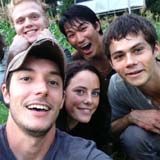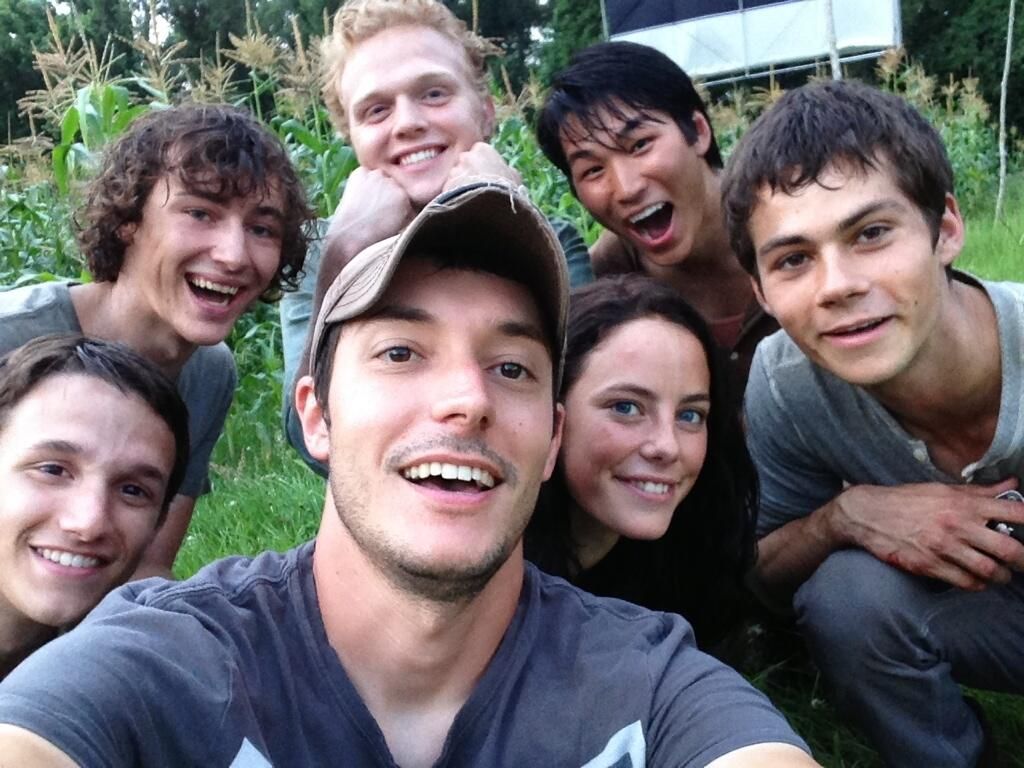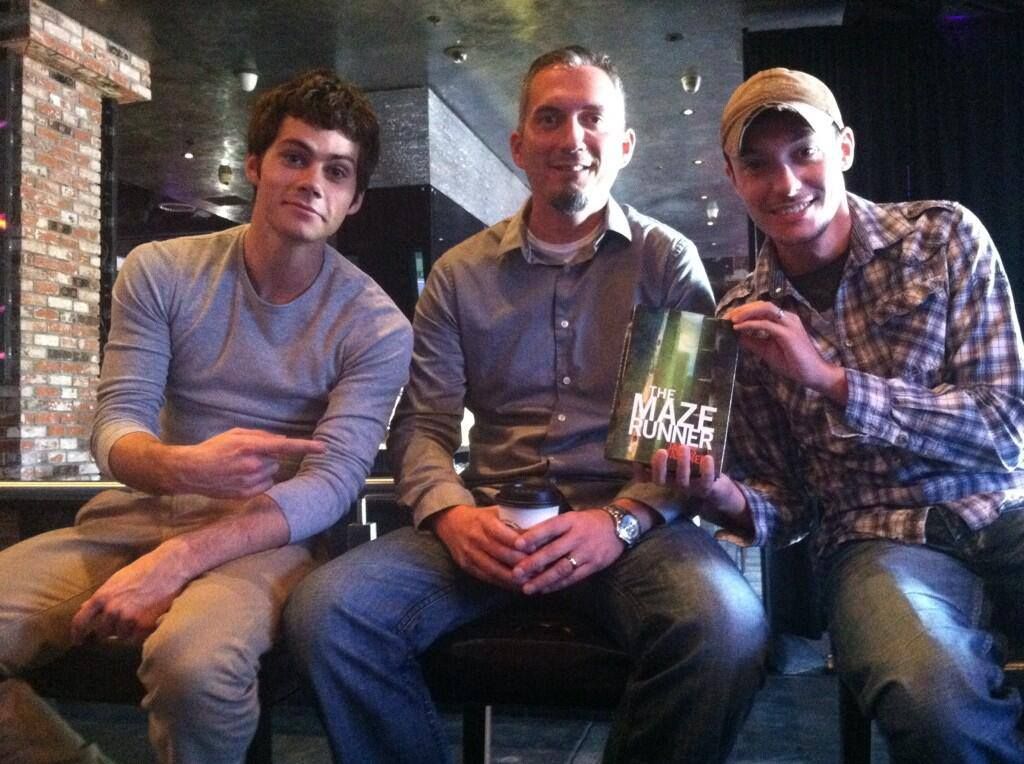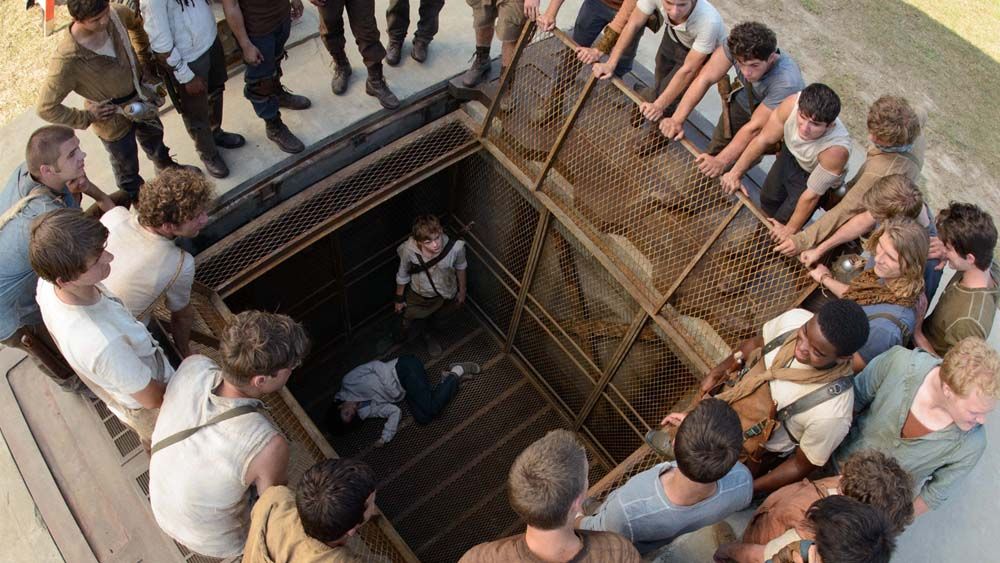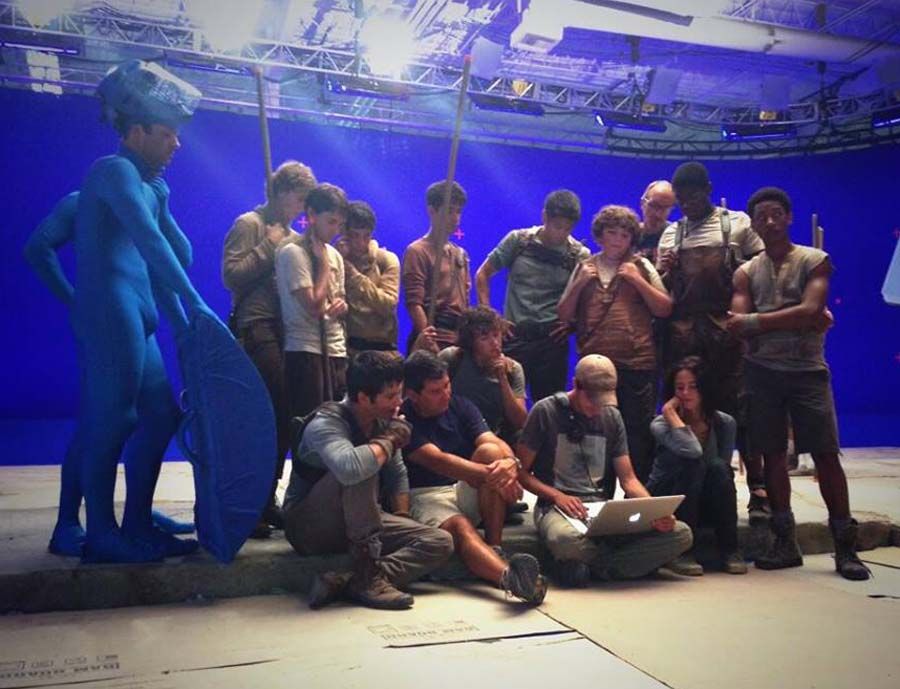Hollywood continues to mine young-adult novels in hopes of unearthing the next Twilight or Harry Potter blockbuster franchise. However, that’s a task easier said than done.
Only The Hunger Games and Divergent have proved lucrative, whereas such recent big-screen adaptations as The Host, Mortal Instruments and Beautiful Creatures underperformed at the box office. But director Wes Ball believes The Maze Runner, based on the first novel in James Dashner’s sci-fi action series, will reverse that trend and blow audiences away.
Opening today, the Fox film revolves around a group of amnesiac teen boys trapped in a mysterious open-field area called the Glade. There seems to be no escape, but a looming giant maze may hold the key to who they are and, ultimately, their way out. The big problem is the structure's rock walls are guarded by lethal biomechanical beasts called Grievers. However, new arrival Thomas (Teen Wolf’s Dylan O’Brien) doesn't care: He plans on getting answers, and getting out, even if it means entering the maze.
Ball, who makes his feature directorial debut with The Maze Runner, spoke with Spinoff Online about adapting the 2009 novel, his favorite moments and a possible sequel.
Spinoff Online: How did you become involved in The Maze Runner? Were you familiar with the novels and went after the project?
Wes Ball: No, actually, I made this little short called Ruin, this little animated action short, and it kind of went viral. I got the attention of Fox that way and they gave me the Maze Runner book. They had hit a spot where nothing much was happening with it, but the president of the studio really wanted to get it off the ground. They gave me the book, I took it home and read it. I had a bunch of ideas. I worked out some artwork immediately. As soon as I started getting pictures in my head, I found my way in. It's my first movie, so I lucked out.
When you read the books, what spoke to you about the material? What was this story about for you?
It's very much that period in your life when you're at high school and trying to find your place in the world and make your own stand. For me, it was all those feelings. On top of that, there was this Lost-meets-Lord of the Flies thing that I responded to. There's some brutal stuff in the book. As soon as I hit that, I was like, “OK, this is going to be cool. It's not just going to be a bunch of kids dealing with teen issues. These are kids dealing with life or death survival issues.” Those concepts stuck out for me as being something that would be fun to play with.
When it comes to adapting books into movies, you can never please everyone. What are you worried you'll get raked over the coals for?
I'm very interested to hear about our ending. In the book, it's very much an open ending. I held onto that because that's what I found interesting about it. We still wrap things up. The movie is ultimately about escaping this place these kids find themselves in, and they do. But, we still leave a lot of answers that need to be explored if we're lucky enough to have a second one. There's a little bit of a chance there, but the studio was on my side for trying that. It definitely throws you right into the next movie.
How much did you consult author James Dashner during filming?
Actually, a lot. As soon as I came on, there was a script there. I felt the script we had didn't quite capture the spirit of the book. Looking back now, I can't believe I did this, but I told the studio I was going to start over. We threw that script out and started over from scratch. As soon as we got the first draft I was happy with, I gave it to Dashner. I introduced myself, showed him some artwork and how I was going to visualize the world he created. It was not only to get his input, but to get his support, which he gave to me tenfold. He was extremely enthusiastic and totally understood the changes I had to make to turn this 300-plus page book into a 110-page script. James has been awesome. The great thing is he's a real movie fan, so he's just thrilled beyond belief to see this thing go up on a screen. James is happy, so it's good to have him in our corner.
Teen Wolf's Dylan O'Brien was cast in the lead role. What impressed you about working with him?
I had a very specific idea of what this character was going to be, which was very much this everyman. Thomas comes in a boy and leaves a man. There needed to be that kind of change. Dylan is an extremely handsome, good-looking dude. Fortunately, he's an incredibly talented actor. We lucked out in the biggest way to have him on board, not just because of his fans from Teen Wolf, but he just has the best attitude. It was all about the hard work. This was not an easy product to make on our timeframe and our budget level. We were doing something very ambitious and it meant whoever we cast was going to have to work really hard because the entire movie was going to be covered through the main character's point of view. He's in every single scene, basically.
The Glade and the maze are characters in themselves. Why was it so important to film on location and what were some of the challenges?
I'm a VFX guy. That's what I used to do before I got this lucky job to direct a movie. Being out there for real always works better. It works better for the lighting. It works better for the performance. It works better for the camera. For me, it was super-important to serve as the Glade. That was not an easy thing to do. Where in the world do you find a space that has 100-feet walls surrounding you on all sides? I probably saw hundreds of locations, these cow pastures and fields. What we found was this awesome, little tucked-away cow pasture in the middle of nowhere in Baton Rouge [Louisiana]. There's a way you enter into this place where you don't even see it at first. You take a hike up this tiny little hill and you cross this hill and you come down into, what for all of us, was the Glade. It was this piece of land, this field, that was surrounded on all sides by this big straight line of trees. What that did for us, those trees, that were probably around 100-feet tall, they served as our walls, at least psychologically. It gave a real sense of what it was like to be trapped.
We started taking this blueprint of the area. I had previously decided on the size of this Glade, which is about three football fields across. We mapped out what this Glade would look like and built it accurately. There's this little council hall where they do all their democratic meetings. We built that in the right spot. We built their village in the right spot and the pit and the elevator. Unfortunately, we had to tear it all down, but I had these dreams that after the movie came out, we'd go out and camp and see what it was like to live on the Glades in this movie.
What about for the maze?
Part of that is on stage where we do a lot of foreground, actual set-piece stuff. In the background, there are little pieces of blue screen you can extend. Any time you have something actually photographable in the frame, it makes the VFX rise to that level. Method Studios in Vancouver was our VFX company on this. They did a really great job, I think the best job they've ever done. Those were the two main challenges VFX-wise. The other challenge obviously is the Grievers, these monsters that inhabit the Glade and become the main adversaries of the movie.
You tweeted to ask fans for their favorite scenes from The Maze Runner novel. Which one do you think they will be most excited to see?
I did that because I wanted to make sure we were hitting all the same beats that the fans would like. One of my favorites from the book is Ben's banishment. That's this character Ben who becomes infected by something called the Flare after he gets stung by a Griever. What you see is these kids have hard choices to make. Sometimes that means they have to send people out on their own, away from their little community to fend for themselves. Sometimes that's because they've either broken the rules or they can no longer stay because they are infected.
Movie franchises often retain the same director for multiple installments. How involved do you want to be in the sequel?
That's tricky. I love the cast. I love these guys because they worked so hard and became such a tight family on this movie. We were kind of at war together. We were trying to do this really ambitious thing. We all stepped up and did the best we possibly could. There's a sense of loyalty and stewardship with this. I will be involved, one way or another. Who knows how? It's too soon to say right now because we're just finishing Maze Runner up right now. We are actively working on the script for the next movie.
The Maze Runner marks your directorial debut. How would you sum up the experience? Did your visual-effects background help bring this to life?
It did. The thing we're trying to do here is make a big Hollywood movie on a pretty small budget. The biggest way to do that is with VFX. The problem with VFX is you can spiral out of control really quickly. If you don't know what you want going in, you spend a lot of time spinning your wheels and time is money. When you're out on set and faced with the problems that this production presents, like, “You can't shoot here. You can't look there. The sun is going down,” having that background to say, “OK, just move the camera two feet to the left. Angle it a little bit down, and I'll take over from there” helps. I'll know what I can accomplish with VFX. You have to make those choices really quickly and be able to see what VFX can do to the frame.
Overall, it's been a great experience. The studio has been nothing but supportive. We've been true collaborators. It's not like the classic thing you always hear about the suits coming in and taking it over and making it something else. It's all been positive and Fox has been good to me.

